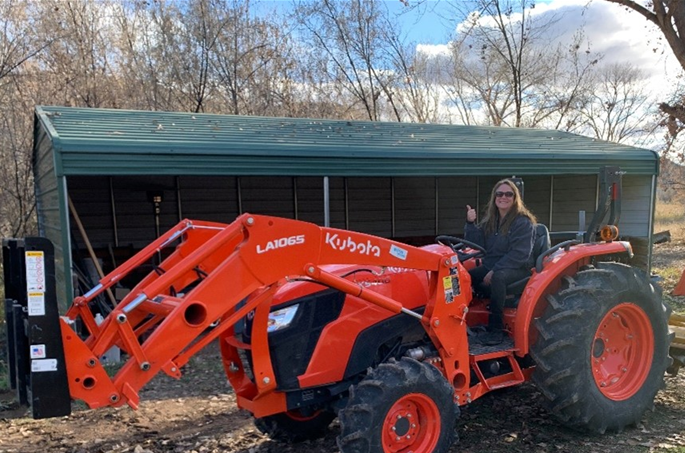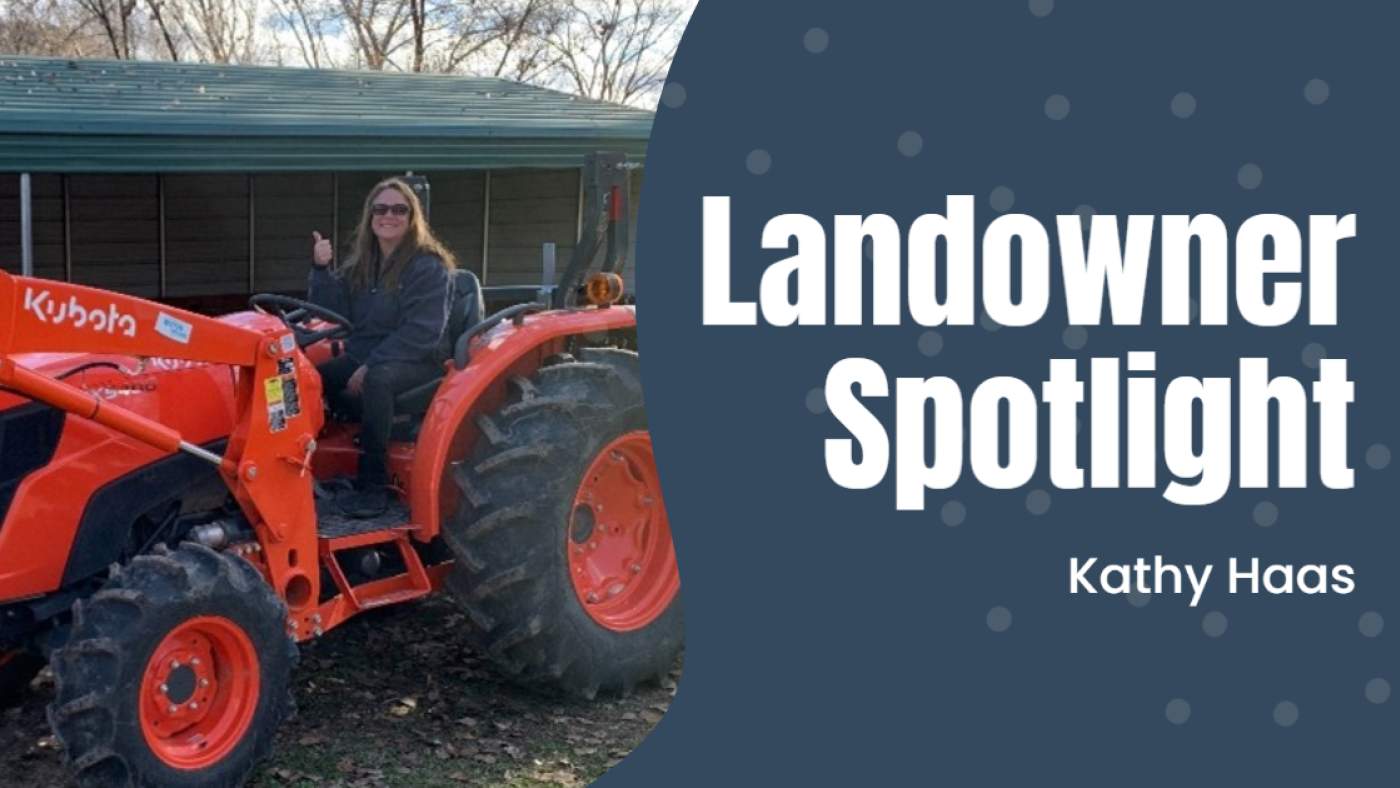Landowner Spotlight: Kathy Haas
For successful restoration at a watershed scale to occur, private landowners and land managers need to be a part of the equation. To address this need, RiversEdge West partnered with the Natural Resource Conservation Service (NRCS) to employ a Private Lands Biologist, Christine Prins. Christine is embarking on long-term restoration and conservation planning and projects on private lands. Today, we’d like to share an example of one of those projects; follow along with us as we share one landowner’s journey to restore her slice of riverside habitat along the Colorado River.

Kathy Haas recently purchased a neglected agricultural property along the Colorado River. She is an avid boater and pictures her stretch of the river corridor to be productive and useful habitat for animals, a welcome space for recreational boaters, and a functioning agricultural field. Upon her first visit to the property, she recognized the tamarisk and Russian olive trees dominating the riverside canopy. She knew she needed to do something about it but didn’t know where to start. So, she called RiversEdge West.
Our Private Lands Biologist, Christine Prins, conducted a site visit with Kathy to determine Kathy’s objectives, concerns, and hopes for the site. Christine conducted several more site visits to inventory the site and get to know the plants and animals using the site, how they may be impeded from fully utilizing the riverside corridor, and what options we have for restoring function. Kathy was able to join in these inventorying trips to learn more about how cool her new property was.

When asked what motivated her to take on this type of project, Kathy said that “the mitigation and control of non- native species is a critical component to water conservation throughout the western states. You do not realize how much water Russian olive and tamarisk consume until you cut into one and experience it. Not only are we doing this to help in conservation efforts, but to also encourage native wildlife habitats to thrive and re-grow to allow native plant and animal species to use the land.”
Making a Plan & Working Together
After the inventorying process was complete, Christine used the information collected to determine the current site potential, and develop possible restoration practices with landowner objectives in mind. The restoration practices were then mapped out on the property with a timeline and becomes Kathy’s Conservation Plan. The Conservation Plan outlines a multi-year process that will begin shifting her riverside habitat which is heavily dominated by tamarisk and Russian olive, to one dominated by native species and utilized by a diverse array of animals.
Restoration and conservation projects are most successful when they occur on a biological timeline (i.e. allowing time for vegetation to establish, weed management, etc.) rather than a calendar year or funding cycle. Fortunately, the NRCS’s financial assistance has more flexibility with individual landowners to do projects over this biological timeline. Since Kathy is instrumental in implementing this plan, it is created unique to her, her land, and her objectives. And through the NRCS Environmental Quality Incentive Program, she was able to receive funding for implementing her plan.
Patience is a Virtue
Kathy’s restoration plan covers the span of 6 years, and progress will feel slow, but knowing that the entire REW community is following her progress will help! She is finishing up the first phase of Russian olive removal in the hay pasture, field borders, and surrounding the seasonal pond. Stay tuned as we will continue to check in periodically with Kathy throughout the years of her project.

